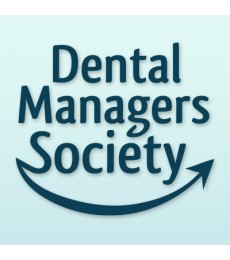The cost of embezzlement or theft within dental offices is probably something that many dentists overlook when determining the daily operating practices of the practice, but it is a widespread phenomenon which costs dentists millions of dollars every year. Research indicates that 35% of independent dental practices have experienced embezzlement or theft within the office. The theft often goes unnoticed for years, and many times involves the most trusted long-term employees. It is important to understand the types of theft that are involved particularly within dental offices, the signs to look for in recognizing that theft is occurring, and the safety checks and practices that can prevent it in the first place.
Some of the types of theft that have been uncovered in dental offices the most include a variety of bookkeeping, billing, insurance and techniques that employees can use to outwit an owner dentist and bilk him or her or his or her patients of significant sums. Some of the notable cases have resulted from insurance practices. An office manager or billing employee bills the insurance company for larger amounts than are actually being charged, collects the payments, and keeps the difference between the higher insurance payouts and the patient payments. This occurs most frequently when the practice takes cash for patient payments. Another technique is to bill the insurance company for work not done. If an office manager or billing employee has the responsibility for both collecting patient payments and billing insurance companies for work, creativity for fraudulent practices abound. License suspensions or revocations can result, and the reputation of the practice can be severely damaged if fraudulent practices are proven, or allegations made, even if not substantiated in the end.
Office managers, billing employees, or those responsible for deposits or with access to patient payment checks, can endorse the checks with forgery, endorse and cash checks for cash, endorse checks with their own endorsement stamps after a dentist’s or dental practice’s endorsement. Keeping double books and pocketing cash payments are also ways of embezzling from the practice. Funds stolen can range anywhere from several thousand dollars to in some cases upwards of well over a million dollars over time.
Some of the signs of theft should be recognized. Indications which should be watched for include not getting financial information reasonably quickly, employees who seem to be uncomfortable with changes in accounting practices, large amounts of unexplained accounting differences, continuing lateness of collections received, cash deposits, declined deposited checks, refusal of employees to take vacations, employees with extravagant lifestyles going beyond their income, employees who seem jealous of the practice owner’s success, and disinclination to detail accounting practices.
There are a number of good practices which should be used in order to minimize the possibility of theft in the dental office. No employee other than the office manager should have access to the checkbook for the practice, and there should be review of the office manager’s handling of the checking account on a regular basis. Cash should only rarely be handled, and deposits should be done by the dentist or there should be a daily check by the dentist on the deposits made. It is good to have a handwritten signature required for all outgoing checks instead of a stamp which might fall into the wrong hands or be duplicated. Monthly income reviews by the dentist should be scheduled, all overdue claims should also be made at that time. Background checks on employees should be done before hiring. Make sure all financial records remain on the premises. Using a CPA on a regular basis is essential, with a reconciliation done monthly on charges and adjustments and copies of collections sent to the CPA. Endorse all payments received immediately and mark all invoices as paid so they cannot be submitted more than once. Dental and financial software should be closed on a timely basis, with passwords employed which are changed from time to time. An audit trail function is often available with dental or financial software.
The most important thing a dentist can do to prevent theft or embezzlement from rearing its ugly head in the dental practice is to have the owner take a visible role in maintaining the financial operations on a day to day basis. Showing interest in the finances often can dissuade a possible thief into developing a scheme for embezzlement.
Brian Hatch
Hatch Legal Group
8 North Main Street, Suite 403
Attleboro, MA 02703
HatchLegalGroup.com
brianhatch@hatchlawoffices.com
508-222-6400


